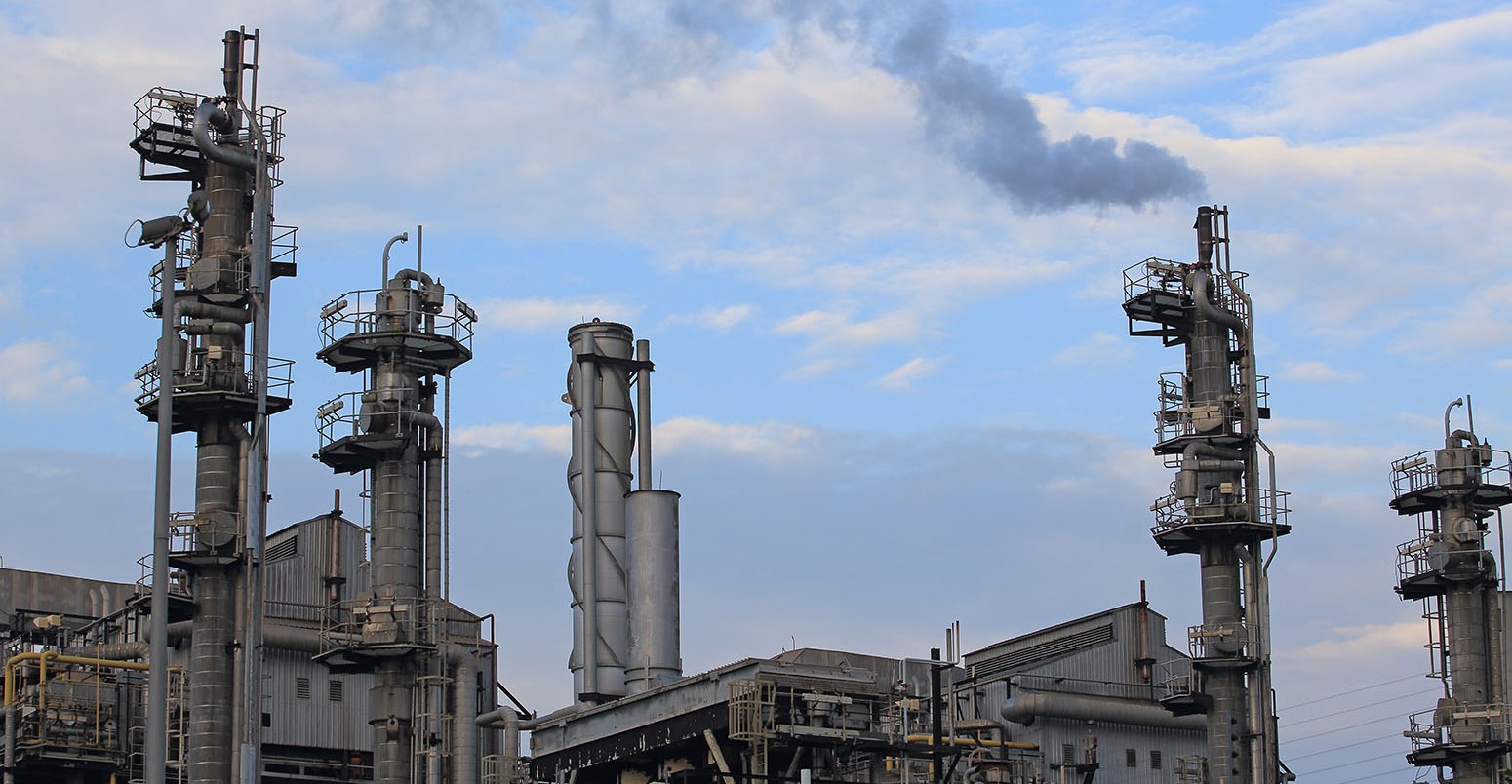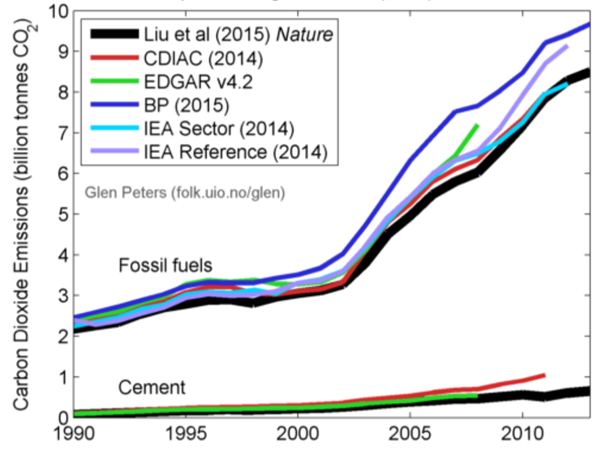Study: China’s carbon emissions substantially overestimated
Simon Evans
08.19.15Simon Evans
19.08.2015 | 6:00pmChina, the world’s largest emitter, has had its contribution to global warming radically downsized.
A new paper finds China’s emissions in 2013 were as much as 14% lower than previously thought, because of faulty assumptions on coal quality and energy use. It says China released 10.6 billion tonnes less carbon dioxide (CO2) during 2000 to 2013, equivalent to three years of EU emissions.
Despite the huge numbers involved, however, today’s findings could have greater significance for scientists than for policymakers. Carbon Brief has the details.
Data adjustments
CO2 emissions are rarely measured directly at source, as there are so many cars, factories and power plants contributing. Instead, scientists estimate emissions from the amount of fuel that is burnt and the amount of carbon contained in each tonne of coal, oil or gas.

The problem is that energy use data is hard to collect and is sometimes revised, while the carbon content of a tonne of fuel can vary widely. Today’s research addresses these problems for China, where statistics are notoriously unreliable, and where fuel quality is relatively untested.
It finds that China used 17% more coal, 2% more oil and 3% more gas in 2013 than reported by China’s national government. During the period from 2000 to 2012, energy use was 10% higher.
The researchers’ figures are more accurate, they say, citing among other reasons the risk that official statistics may have been subjected to “‘adjustment’ for political or other purposes”.
China uses almost a quarter of the world’s energy and burns more than half of the world’s coal, so this update is significant in its own right. More important for the climate, however, is emissions.
Here, the researchers also make large adjustments. Using samples from thousands of mines, they conclude that Chinese coal is of much lower quality and has lower carbon content than in other countries. One reasons is that it is 27% ash on average, compared to 14% in the US.
What is the net effect of China burning more tonnes of more coal, oil and gas but each tonne containing less carbon? The paper concludes:
Results suggest that Chinese CO2 emissions have been substantially overestimated in recent years.
It says that emissions in 2013 were 14% lower than in one internationally recognised database, while in 2005 they were 12% lower than in China’s official report to the UN climate convention.
Glen Peters, a co-author on the paper and senior researcher at Norwegian climate research centre CICERO tells Carbon Brief:
Our estimates for Chinese emissions are below all others in almost every year.
The new emissions estimates (black lines, below) are lower than those produced by the Carbon Dioxide Information Analysis Center (CDIAC, red line), the EU’s EDGAR database (green), the International Energy Agency (lilac and cyan) and oil firm BP (blue).
Estimates of Chinese CO2 emissions from fossil fuels and cement production. Today’s new figures come from Liu et al. Source: Glen Peters.
The adjustments mean China’s fossil fuel and cement emissions during 2013 were 1.3 billion tonnes of CO2 lower than thought, the study says, an amount equivalent to Japan’s emissions that year or Germany’s and the UK’s combined.
Over the period from 2000 to 2013, the new paper suggests China emitted 10.6 billion tonnes less than previously thought. It would take the EU three years to emit as much.
Implications
These changes to Chinese emissions would have global implications. They would mean revising global CO2 emissions in 2013 downwards by 2.8%, with emissions in 2000 shrinking by 1.5%.
Recent emissions growth rates would also be scaled back, by around a fifth of a percent a year. That’s against the previously estimated average growth of 3.8% per year in the decade to 2013.
This would leave more space in the global carbon budget before the internationally agreed 2C warming limit is likely to be breached. This is potentially space that China could claim as its own, depending how the remaining budget is divided up. However, a 10.6 billion tonne reduction in Chinese emissions over the past decade represents just a few months of current global emissions.
The accounting adjustments would also change China’s share of current emissions. Instead of being responsible for 29% of global CO2 emissions in 2013, China would only bear responsibility for perhaps 26%.
On a per capita basis, the revisions would mean China’s CO2 emissions remain below those in the EU. The news that the average Chinese had in 2013 overtaken the average European in climate terms received wide media coverage, including from the BBC. Even if that turns out not to be true, however, China is likely to have overtaken EU in per capita emissions in the intervening period.
In terms of China’s international climate pledges, the implications are less clear. Its carbon intensity target, for instance, is expressed relative to the level in 2005. Reduced estimates of emissions apply to 2005 as well as 2013, so the relative change in emissions intensity — and therefore the difficulty in meeting the target — would hardly change.
Peters tells Carbon Brief the new research “wouldn’t really change the ease of reaching their intensity target”.
For China’s pledge to peak emissions by “around 2030”, the decrease in emissions also has little impact. That’s because China hasn’t specified the level at which its emissions will peak. Only the rate of change of emissions matters.
It’s also worth bearing in mind that this won’t be the last time China’s energy and emissions data gets revised. Peters says:
There’s going to be more statistical revisions in future…you have to be a little bit cautious to draw concrete policy conclusions.
A case in point is China’s 2013 census, which started to publish its findings after today’s research was completed. The census has revised energy consumption figures upwards by around 10% and coal by 14%. Peters says this would wipe out perhaps 6 or 7% of the CO2 reductions they found.
While the policy implications seem relatively limited, the Chinese data adjustments do have significant implications for scientists studying the global carbon cycle. If global emissions are lower than we thought, then today’s study also suggests natural carbon sinks might be less effective.
The paper says land sinks could be 15% smaller, representing a “considerable” revision to the global carbon budget. The response of the earth’s forests, soils and oceans to rising emissions will determine what proportion of warming gases remain in the atmosphere, so understanding the balance of emissions and sinks is important.
However, Peters says the changes probably aren’t big enough to affect our understanding of climate sensitivity – the amount of warming we can expect if greenhouse gas levels double.
Main image: Coal power station in Hong Kong, China. Credit: © Lewis Tse Pui Lung/Shutterstock.com.
Liu, Z. et. al. (2015) Reduced carbon emission estimates from fossil fuel combustion and cement production in China, Nature, 10.1038/nature14677



